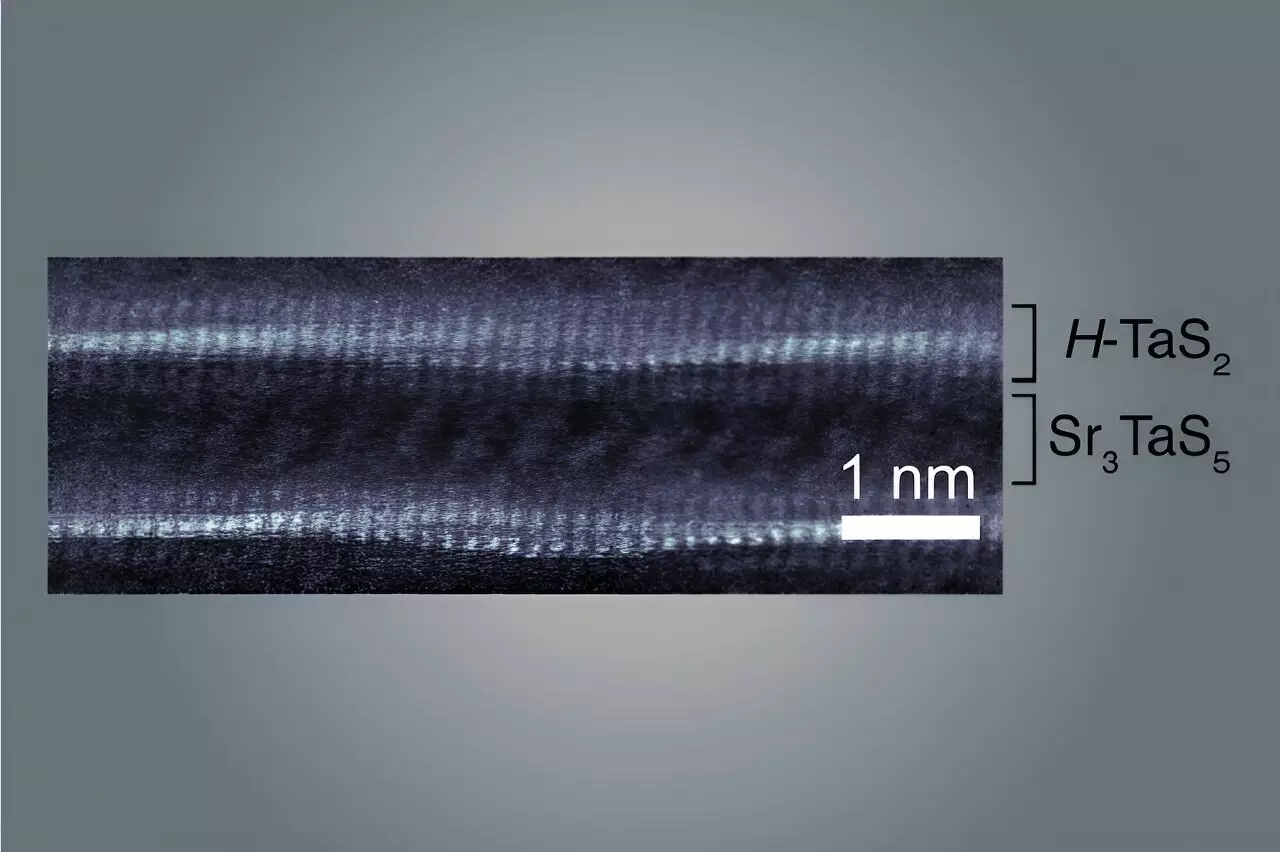Scientists at the Massachusetts Institute of Technology (MIT) have made remarkable strides in the field of materials science by developing a unique composite with striking superconducting and metallic characteristics. This novel material, constructed from atomic layers that are only a few billionths of a meter thick, showcases a groundbreaking method of synthesis and opens up new avenues for understanding quantum behavior at macroscopic scales.
Instead of the traditional crystal structures often observed in solid-state physics, the material created consists of wavy atomic layers that repeat regularly. These layers are meticulously designed and synthesized through a process of rational design, blending various metal powders and subjecting them to high temperatures in a furnace. This innovative technique has allowed researchers to yield large samples that can be easily manipulated, setting this work apart from prior methods which typically produced materials at the nanoscale, thereby complicating their study and application due to their minute size.
This synthesis not only simplifies the experimentation process but highlights a significant advancement in materials engineering. Joseph Checkelsky, a lead researcher in this project, emphasizes that materials exhibiting such non-conventional structures can introduce fresh physical properties. The creation of similarly structured materials is deemed easier due to the team’s fundamental understanding of the chemical interactions within these compounds.
The similarity of these new materials to a layered cake reflects how atoms interact across the various layers. At the heart of this exploration lies tantalum and sulfur, elements that form the core of the metallic layer, while medium ‘spacer’ layers composed of strontium and tantalum allow for a discrete and repeated structural formation. When these layers are combined, variations in layer sizes and structures result in a phenomenon where one layer must adapt or “buckle” to fit atop another, forming the distinctive waves responsible for the material’s exceptional superconducting capabilities.
As the researchers explain, this buckling phenomenon is akin to placing a sheet of legal paper on a standard sheet of printer paper. The imposition of the “legal paper” requires it to pucker upward where unavoidable, creating a series of waves across the surface. These structural alterations significantly influence how electrons traverse the material. In true superconducting fashion, below a specific temperature, electrons can move through this material without energy resistance—a characteristic that has the potential to revolutionize various applications in electronics and energy transmission.
While superconductivity is a well-known property in certain materials, the nature of this new wave-structured material offers an added layer of complexity. Due to the wavy structure, the behavior of electrons is not uniform throughout the sample. Some regions exhibit stronger superconductivity, while others are weaker, suggesting that the electron dynamics are shaped by the very structure of the material. This variability might provide a pathway for engineering superconductors that can be fine-tuned for specific applications.
Moreover, these unusual metallic properties arise from the inherent directional flow of electrons along the wave troughs. As noted by the researchers, electrons find it notably easier to traverse the valleys of these waves compared to surmounting the peaks, leading to an anisotropic conductivity—a behavior that could be harnessed in next-generation electronic components.
The implications of this research extend far beyond the current discovery; it lays the groundwork for the development of a new family of materials. The concept of designing materials through a deliberate structure offers a foothold for future innovations in superconductors and beyond. Researchers are now equipped to experiment with additional configurations, potentially yielding materials with even more distinct and advantageous properties.
As the field of condensed matter physics continues to evolve, the findings from MIT promise not only to enhance our scientific understanding of superconductivity but also to inspire practical applications in fields such as quantum computing, energy storage, and advanced electronics. The exploration of these discoveries is just beginning, and as Checkelsky aptly puts it, this domain is “uncharted territory” filled with opportunities for surprising and unexpected outcomes.
The work accomplished by the MIT team marks a pivotal moment in materials science, demonstrating the power of innovative design and synthesis in uncovering new physical phenomena and properties that could change the landscape of technology as we know it.


Leave a Reply